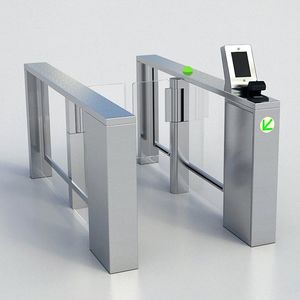
Airport security air lock OWC-CB02-01for access controlautomaticnon-return
Add to favorites
Compare this product
fo_shop_gate_exact_title
Characteristics
- Domain
- for airport
- Function
- for access control
- Other characteristics
- automatic, non-return
Description
Designed to control the flow of people.
The Oneway Corridor is mainly used in the terminal area of airports, for example the entrance or exit to the terminal, to control the passengers from air- to landside
and other areas where passengers or employees are only allowed to move in one direction.
The oneway corridor can only be passed in one direction. An acoustic warning sounds if attempt is made to pass through in the opposite direction. All doors close,
taking personal safety into account, to prevent complete passage.
The modular design of the interlock meets all environmental requirements.
The interlock can be extended, the longer the corridor, the higher the security. Doors are possible as full-height and half-height doors.
Furthermore, the angeld version is conceiveable in order to adapt to structural conditions or to exclude the possibility of dangerous objects being thrown through.
Various alarm-triggering sensors are available for detecting passage in the opposite direction. With these sensors it is also possible to detect left objects in the corridor.
The Corridor consists of a self supporting, robust stainless steel profile construction with glass side walls. The ceiling can be open, to easily integrate an existing smoke detection system, or partly or fully closed to prevent objects from being thrown from or into the corridor. The ceiling offers sufficient space for the installation of further components.
Areas of application
Versatile area from airports to border crossing
Catalogs
Oneway Corridor OWC-CB02-01
2 Pages
*Prices are pre-tax. They exclude delivery charges and customs duties and do not include additional charges for installation or activation options. Prices are indicative only and may vary by country, with changes to the cost of raw materials and exchange rates.








